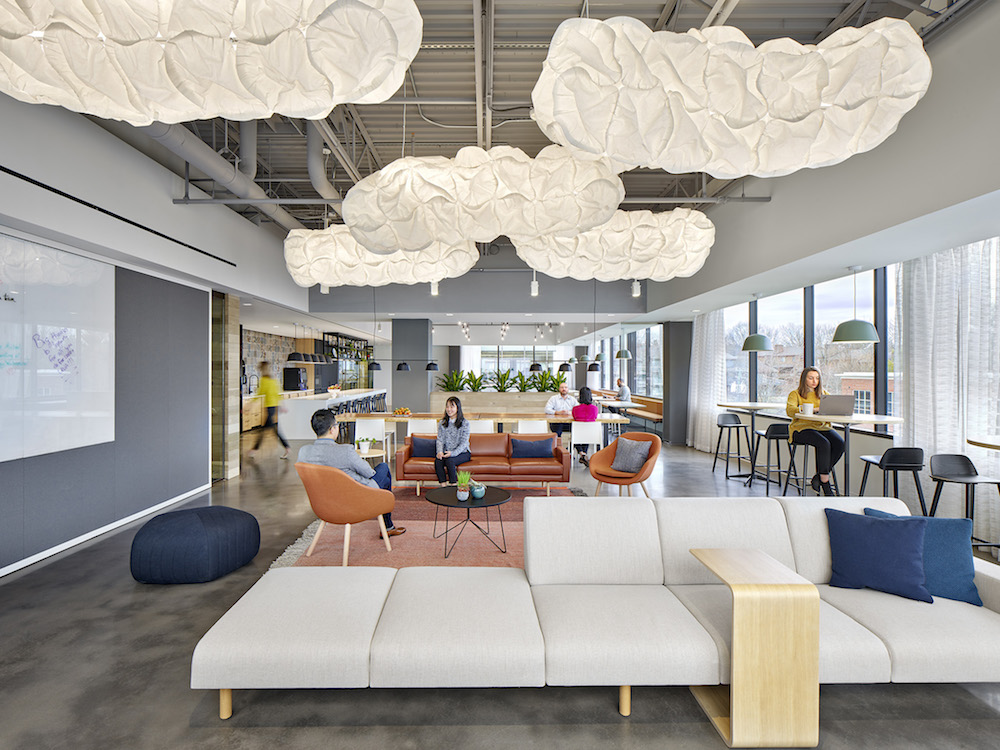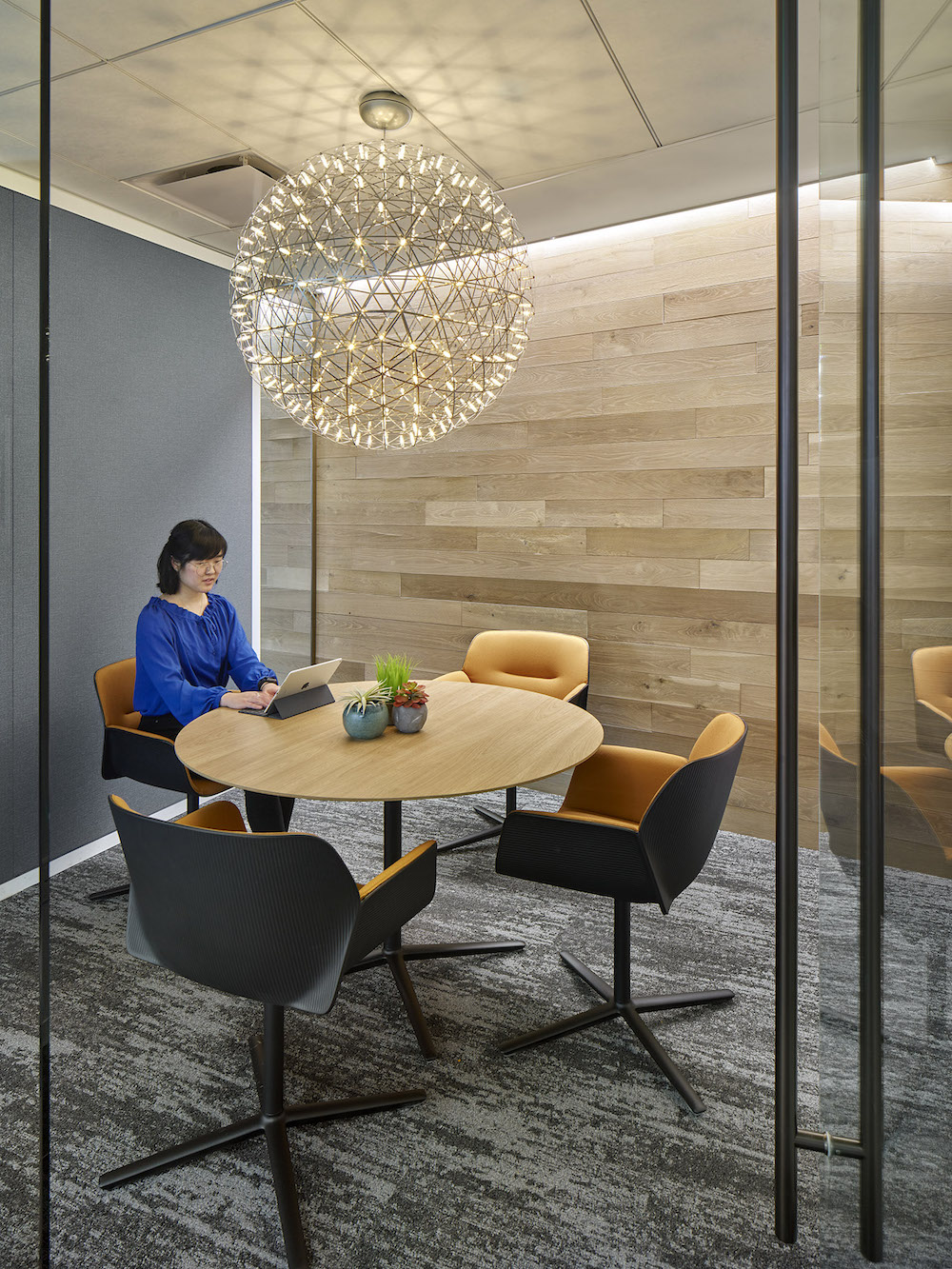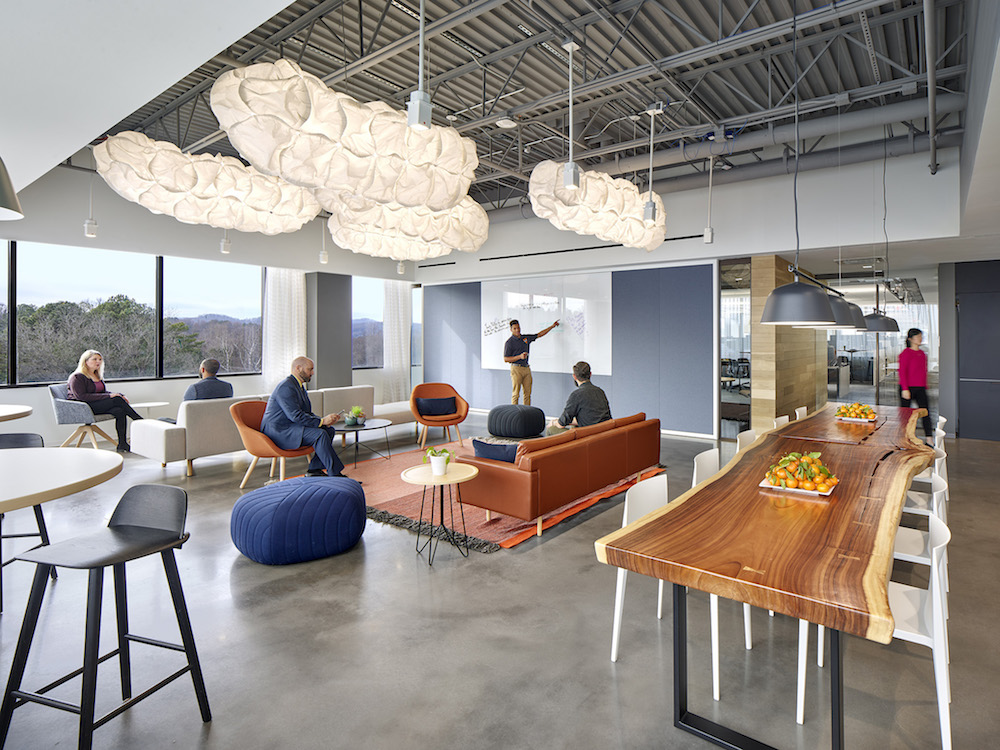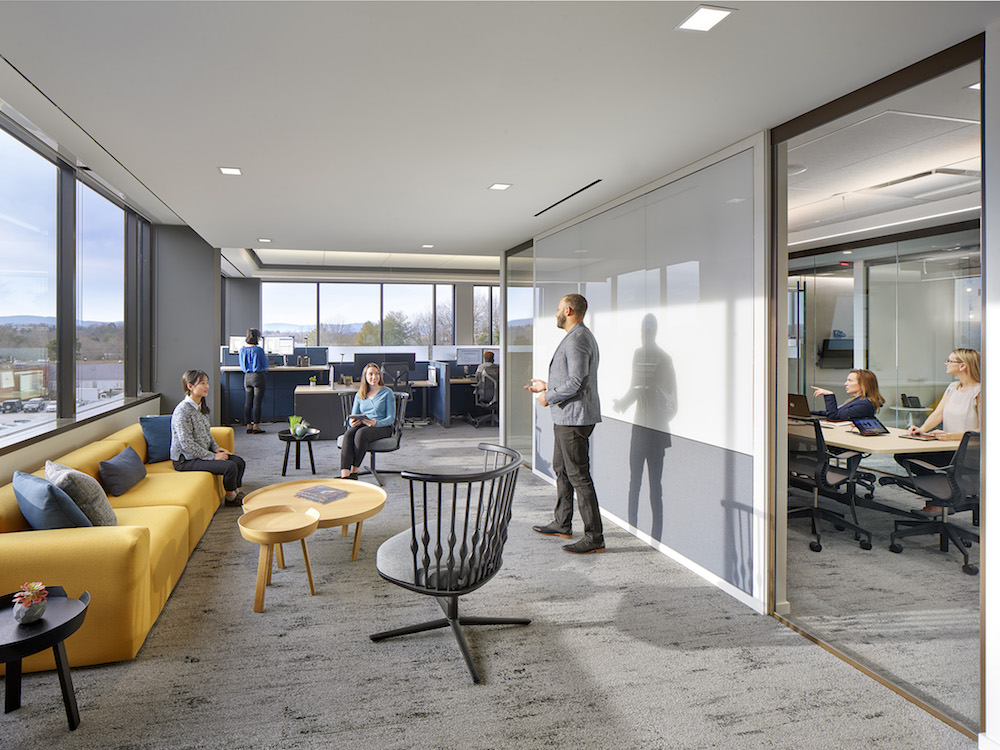“In a hybrid workforce world, it’s not only about the plexiglass. It’s about the person.”

COVID-19 created a paradigm shift for the future of work. We may never return to “normal,” but the crisis taught us to be more mindful of health and safety, and that the workforce can successfully adapt as we navigate an uncertain future. To get to a “new normal,” the traditional office must be redesigned. But as we review social distancing, barriers, and directional signage, we also need to consider work protocols and individual behaviors. In a hybrid workforce world, it’s not only about the plexiglass. It’s about the person.
Just as the advent of tech revolutionized the workplace, so too will our work environments adapt to a world in which some people return to the conventional office, but many more will continue to work from remote locations. This will include co-located workers, whose face-to-face office interactions are supported by virtual communication, remote workers who conduct all activities through tech platforms, and hybrid workers whose productivity is supported by a mix of in-person contact and virtual collaboration.
Even before the pandemic, corporations and government agencies had begun telework policies and flextime to accommodate demands for enhanced work-life balance. Fast-forward to March 2020 when mandatory lockdowns to contain the coronavirus spread turned “non-essential” employees into remote workers overnight. Today, multiple surveys suggest most employees want to continue to work—at least partially—from home. But as many as nine in ten want to spend at least some hours inside a traditional workplace. And Generation Z employees, who will soon become the largest workforce segment, indicate far greater interest in splitting time between home and workplace. Offices must change not only how they look, but how they accommodate a diverse hybrid workforce.

Adapting the office
Hybrid workers who spend some of their working hours inside an office will most likely be there to meet and collaborate. They will look for an inspiring and motivating home base that reflects the company’s culture, brand, and values. Assigned workspaces will be optional. Even shared touchdown or hoteling spaces will give way to meeting spaces. Choice will dominate the space.
Supporting the hybrid workforce
Employers who already embraced and adopted virtual collaboration and communication tools must continue training to ensure that employees consistently increase their teaming technology skills. A user experience app, for instance, can let employees stay connected with what’s going on in the office, while also letting them reserve a personal workspace or meeting or collaboration rooms.

Adapting to a hybrid work-life
As creatures of habit, humans tend to resist change. To accommodate the hybrid workforce who embrace remote working and also crave social connection and interaction, employers will need to strike a balance for each individual employee profile. They’ll need to ask, not just about what the home workplace looks like and how well it performs, but also how the employer can support and reinforce new work protocols and individual behaviors. Is the employee an introvert who recharges by spending time by themselves? Or are they an extrovert who draws energy from interaction with others?

Determining the percentage of time that each worker spends on each type of task—from head-down individual work to phone calls and digital interaction to face-to-face team collaboration—will be critical to apportioning the split between the office and remote locations. Offering guidance and laying a groundwork that supports employee confidence comes next. That means training and coaching for both management and their teams.
This training must do more than help employees optimize tech tools such as Microsoft Teams, WebEx, and Zoom as an ongoing strategy for growth. We must also be attentive and train for individual behaviors. For example, when participants in meetings are divided between face-to-face and virtual locations, in-person participants may dominate the meeting. In virtual collaborations, being on camera may create a greater sense of connection and opportunity for some, while feeling awkward or uncomfortable to others. Awareness and adoption of new behaviors in the hybrid workplace will be crucial.

Other tools will be needed to set expectations for working in a universe with fewer face-to-face interactions with peers and supervisors. Shared online calendars, for instance, can set assignments and markers for progress, as well as meeting times and deadlines. One-on-one “check-ins” to discuss challenges, along with employee surveys and focus groups, can also help monitor progress and gauge success.
As we redesign office space and roll out new protocols for hybrid work, employers can help employees turn a challenge into an advantage. We can offer greater choice and opportunity to the workforce as individual skills, talents and professional preferences allow. We must also provide support to one another as the workplace shifts and our habits adjust. If Albert Einstein was right about “the measure of intelligence is the ability to change,” we’re all being given an opportunity to show just how smart we really are.

